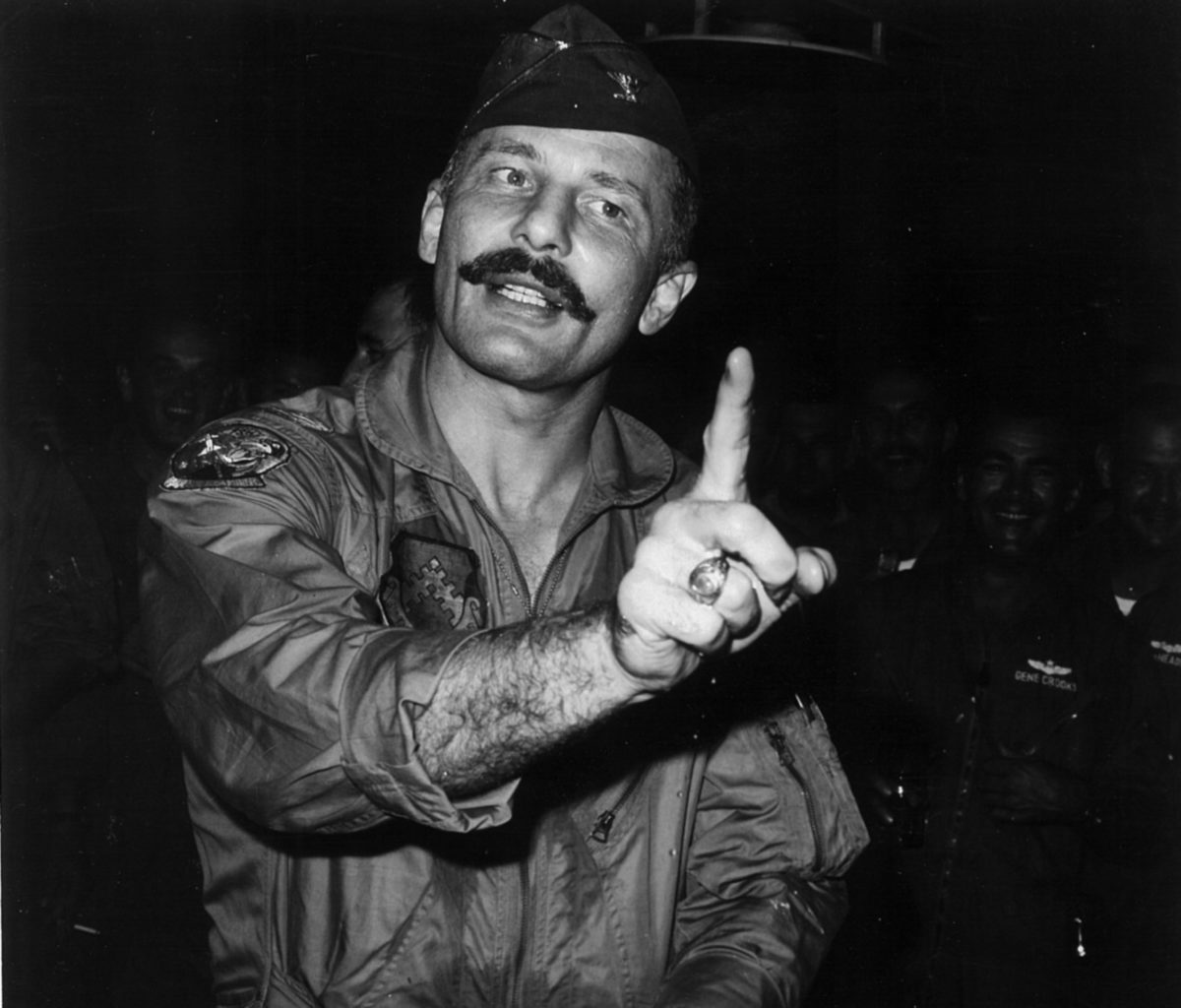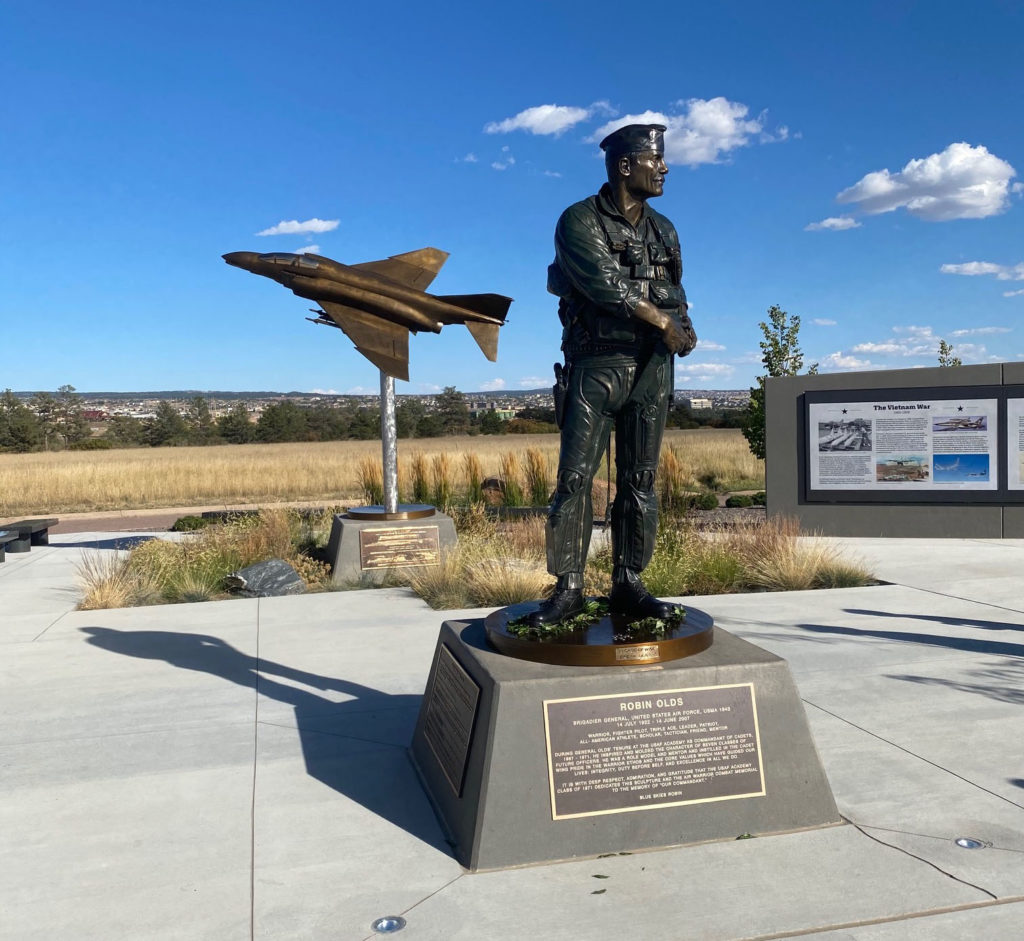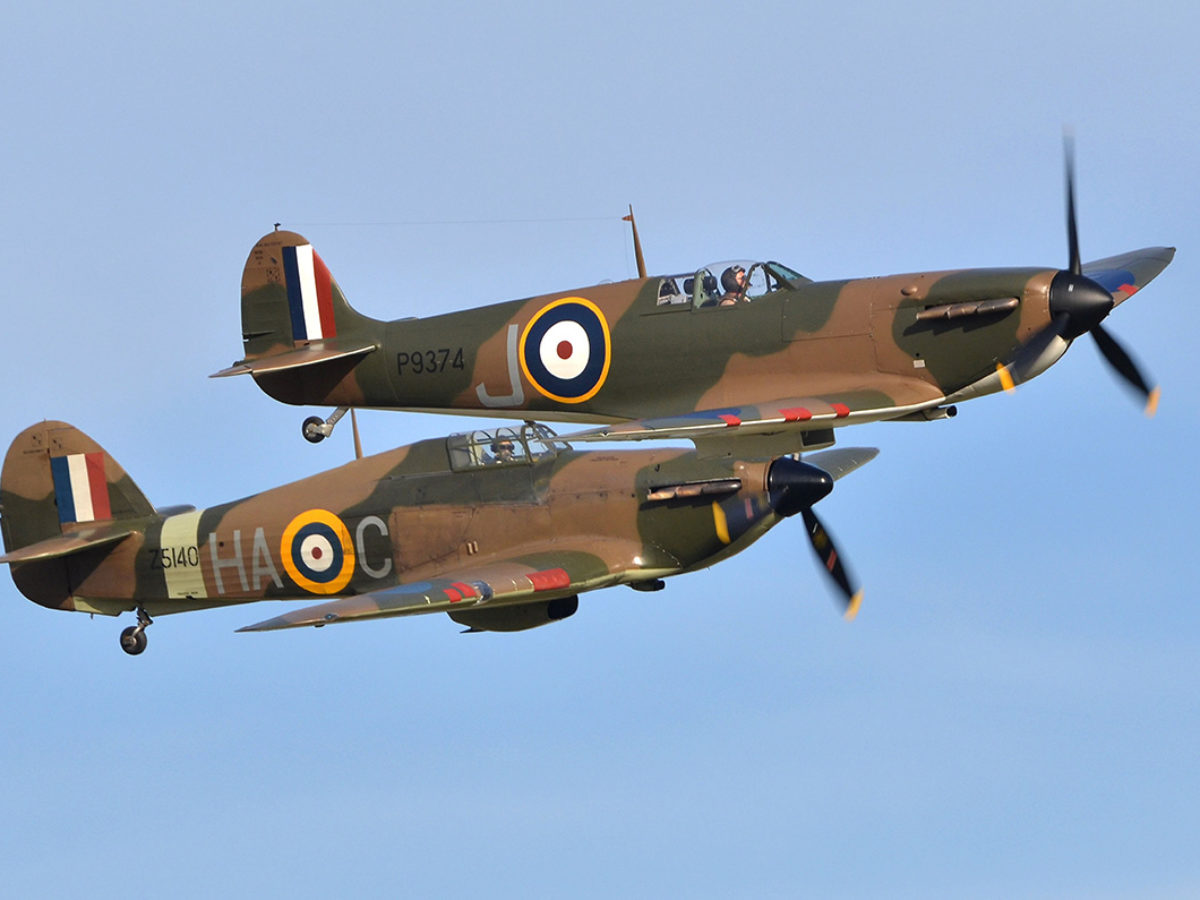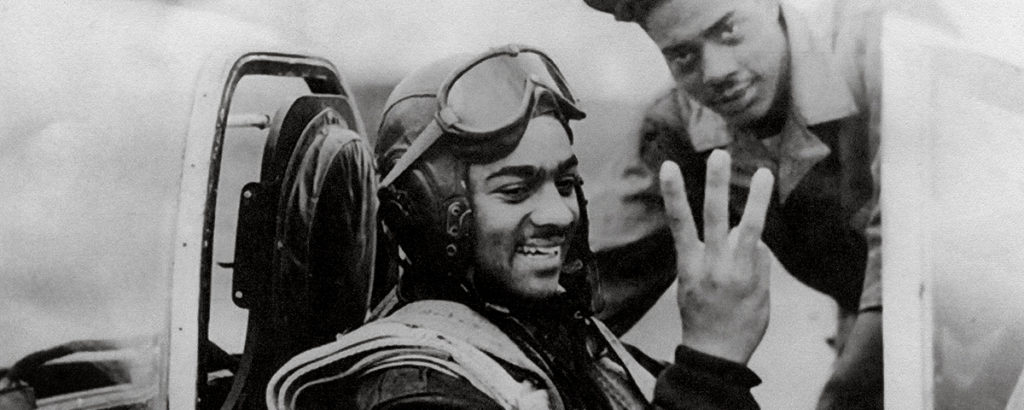A month before the fall of Nazi Germany, Maj. Robin Olds of the 479th Fighter Group, U.S. Army Air Forces, scored his final aerial victory of World War II, chasing a Messerschmitt 109 through a formation of B-24 Liberator bombers and shooting it down. More than two decades later, on Sept. 30, 1966, a U.S. Air Force C-130 Hercules dropped Olds, a colonel by then, and the rest of the passengers on the wrong end of a runway at Ubon Royal Thai Air Force Base, home of the 8th Tactical Fighter Wing. “We stood on a piece of hot concrete a mile away from base ops, the sun beating on us from a brassy sky,” Olds wrote in his memoir. “A fine greeting for their new commander.”
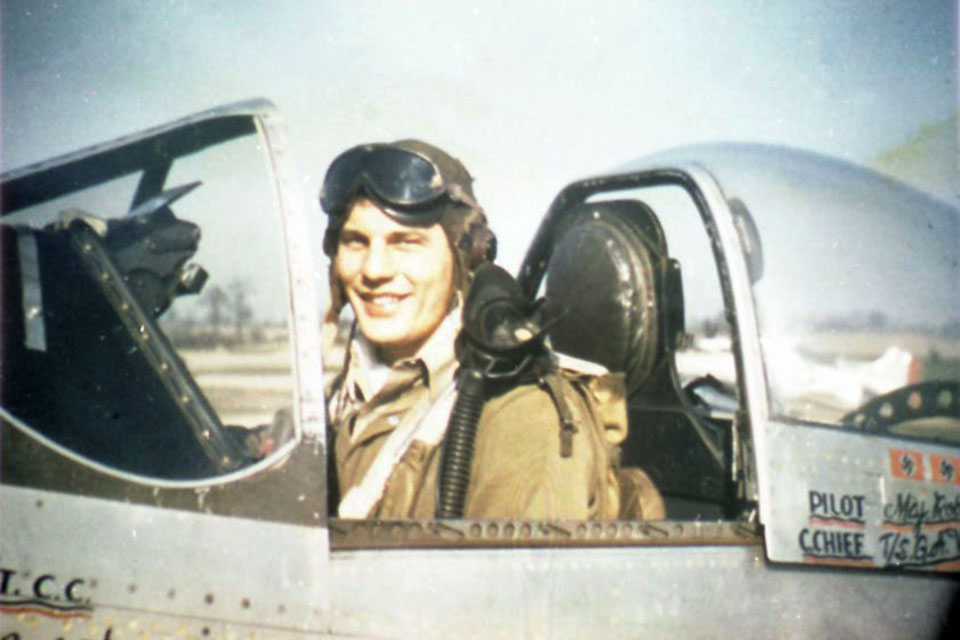
The pilots of the 8th TFW, who called themselves the “Wolfpack,” had bigger worries than catering to a new commanding officer. In January 1966 the North Vietnamese air force fielded new Soviet-built Mikoyan-Gurevich MiG-21 “Fishbed” interceptors. Deploying heat-seeking missiles in ground-controlled hit-and-run tail attacks, the MiG-21s were exacting a toll on the Air Force’s F-105 Thunderchief bombers, adding to the losses already being inflicted from anti-aircraft guns and surface-to-air missiles. Anti-aircraft fire, SAMs and MiGs were also inflicting losses on the Wolfpack, which flew F-4 Phantom II fighter-bombers. In six months from April to September 1966, the unit had lost 18 Phantoms—eight of them in September alone—and 21 pilots were dead or missing, remembered 1st Lt. Ralph Wetterhahn in the fighter wing’s 555th Tactical Fighter Squadron, the “Triple Nickel.”
Recommended for you
The Cold War Air Force was all about intercontinental ballistic missiles and strategic bombers. Fighter planes and fighter pilots engaging in aerial dogfights were considered “old hat.” Double-ace Olds, with his foul mouth, heavy drinking and movie-star wife, Ella Raines, rubbed the bomber generals the wrong way. One told him, “You’re not going to put on your leather jacket, your scarf, your helmet and goggles and go out and do battle with the Red Baron. You’ve got to get it into your head: we’re never again going to fight a conventional war.” Olds had missed the fighting in Korea, but finally ticked off somebody enough to get himself sent to Vietnam. “It had been twenty-two years since I’d fought in a war,” he later recalled, “but it was obvious where my task lay.”
The young fighter jocks at Ubon were equally leery of the “Old Man,” who at 44 was twice their age and had never flown a Phantom or fired a guided missile until a few weeks earlier. “We had heard about Olds,” Wetterhahn said. “He had flown P-51 Mustangs and P-38 Lightnings over Europe in World War II and had scored 12 kills in dogfights. We’d also heard that he had been on the general’s list some years ago, but had been redlined from promotion. We were curious to meet this resurrected bad boy, and soon after his arrival, everybody got the opportunity. He ordered all pilots to come to the main briefing room—the first time we’d all been brought together.”
Capt. John B. Stone of the 433rd Tactical Fighter Squadron, “Satan’s Angels,” never forgot Olds’ intro: “I’m the new guy. You know a lot that I don’t know, and I’m here to learn from you. But in two or three weeks, I’m gonna be better than all of you. And when I know more about your job than you do, you’re in trouble.”
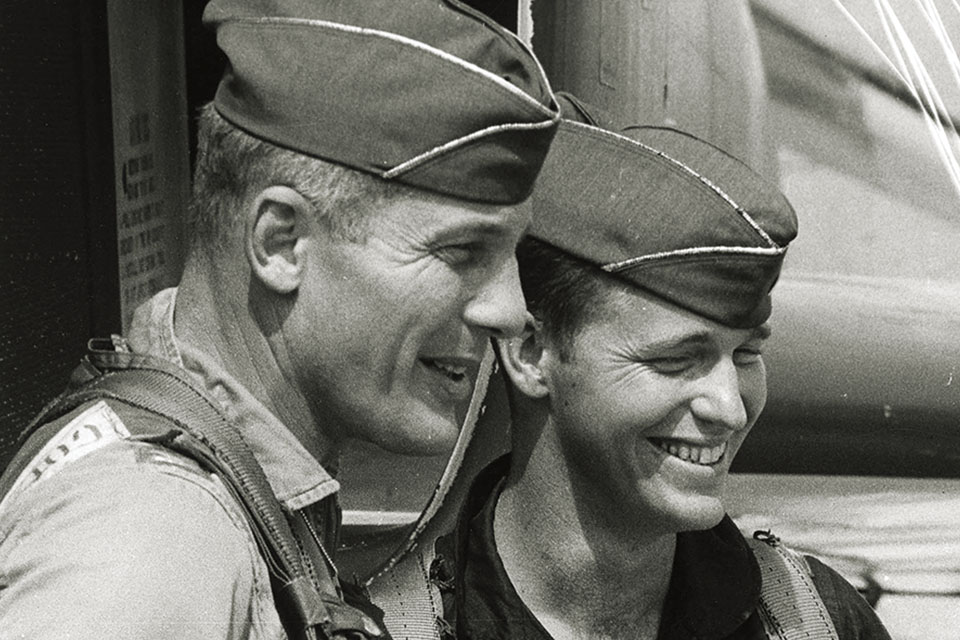
‘These Guys Had Spirit’
Those pilots “had little time or respect for wing commanders,” Olds said. “Well, why should they? None of the commanders flew much; therefore, they knew little about the missions.” All that was about to change. “I knew that there was a spark of morale at the flying squadron level that could be built into something bigger. These guys had spirit.”
Starting out in the tail-end of formations like a lowly second lieutenant, the new commanding officer quickly revealed his experience with stick and rudder. In only two or three weeks, as Stone remembered, Olds was “out front on the pointy end, leading.” And Wetterhahn concluded, “This guy Robin Olds was the real thing.”
Olds looked into the 8th TFW’s high casualty rate and found that the biggest threat was Air Force doctrine. Bombing raids went north in lockstep, predictable patterns. “There were no tactics,” Stone said. “Everyone went the same route, the same time of day, the enemy knew we were coming.”
“I might be the new guy in town,” Olds said, “but I knew that doing the same thing along the same route from the same direction one after another wasn’t a survivable tactic.”
dogfighting rookies
The new commander also faced another hurdle: His pilots had little experience and not much training in dogfighting techniques. Olds told one of his pilots, former air-combat instructor Capt. Everett Raspberry: “Razz, you’re the only guy around here who has taught any air-to-air at Fighter Weapons School, so I need you do some training with the other guys. You know these guys don’t know a whole hell of a lot about air-to-air or combat maneuvering or missiles for that matter—so teach them!”
“The problem was,” admitted Raspberry, who had trained in old F-100 Super Sabres, “I had never fired a missile from an F-4 before; in reality, not many of us had.”
The MiGs were not inclined to risk aerial combat with other fighters, preferring to attack the bombers that were pounding North Vietnam. “The MiGs exhibited a tendency to avoid the F-4s,” Olds observed.
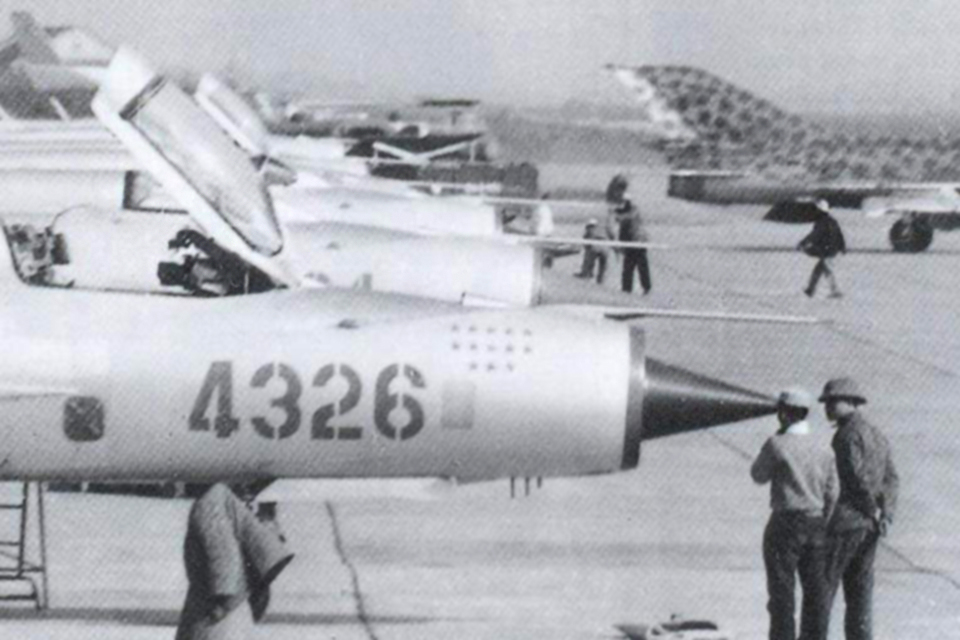
American pilots could fly over the communist air base at Phuc Yen, 19 miles north of Hanoi, look down and see silver MiGs perfectly lined up along the ground, where one attack could wipe them out. Indeed, Olds could probably have dispatched the whole fleet himself. In World War II, he had destroyed 11½ planes (sharing in the destruction of one) that were parked on the ground. North Vietnam’s entire MiG force in 1966 consisted of just 16 aircraft. But Olds and other pilots in Vietnam were forbidden to strike military installations like the air base at Phuc Yen because of President Lyndon B. Johnson’s concerns that they might kill Russian and Chinese advisers, giving those countries an excuse to enter the war.
Since Olds was prohibited from hitting North Vietnamese aircraft on the ground, he told Stone one night, as they pored over intelligence reports, “Damn it, we’ve got to get those MiGs up where we can get at them.”
Stone, a veteran of more than 50 missions up north, had an idea. Because the MiGs were avoiding the F-4 Phantom fighters and focusing their attacks on the F-105 Thunderchief bombers, the F-4s should disguise themselves as F-105s to lure the North Vietnamese aircraft into a dogfight where the Americans could destroy them, Stone reasoned. That October the F-105s, nicknamed “Thuds,” had been equipped with new electronic equipment that jammed radar and blocked tracking systems the North Vietnamese used in guiding their SAMs. Olds and Stone decided to borrow some F-105 jammers and rig them to the Phantoms, making them appear to enemy radar as Thuds.
“Our ruse was simple,” Olds wrote. “Our F-4s would mount a typical large strike using the F-105 call signs, routes, and timings, the routine stuff that the North Vietnamese were used to seeing in the predictable bombing raids by the Thuds; but we would be armed for air-to-air combat.” The F-4 carried four radar-guided AIM-7E Sparrow missiles and four heat-seeking AIM-9B missiles. If the MiGs fell for the bait-and-switch, they would encounter not Thunderchief bombers but instead waves of Phantoms, all loaded and ready for a fight.
bait and switch
The first test of Olds’ deception tactics was set for New Year’s Day 1967, with the launch of Operation Bolo, named for a Filipino machete that looked harmless until revealed as a weapon. The plan called for 12 Phantom flights, with four fighters each, to go directly over the four air bases around Hanoi to entice the MiGs into the air. Two of those F-4 flights would block the MiGs’ northeastern escape route to China. The rest were scheduled so that once the MiGs were flushed out, at least one flight of F-4s would be over each of the four enemy airfields for the next hour, “ready to shoot down MiGs as they tried to land,” Wetterhahn said.
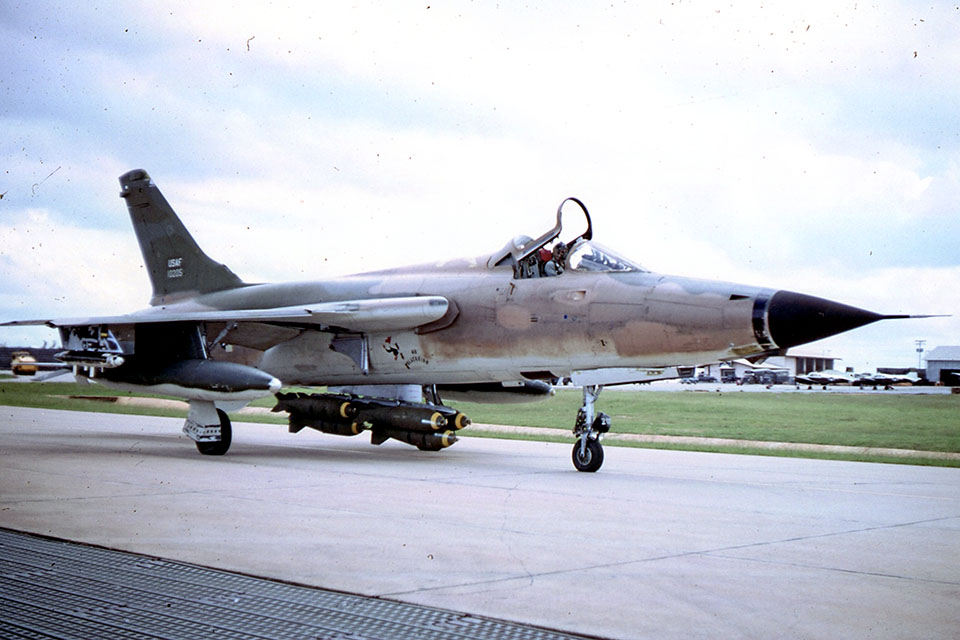
The 8th TFW flights were code-named after cars of the day—Ford, Plymouth, Tempest, Rambler and Olds(mobile). “Naturally,” said the wing commander, “my flight would be Olds.” Minutes behind his flight was Ford Flight, led by deputy wing commander Col. Daniel “Chappie” James Jr. (later the first African-American to reach the rank of four-star general); followed by Stone with Rambler Flight.
On New Year’s Day, poor weather over Hanoi forced a 24-hour delay, and the next morning was little better: solid cloud up to 7,000 feet. But the clouds would keep enemy ground observers from spotting the F-4s’ masquerade, so Olds told his men, “OK, Wolfpack, “go get ’em!”
Takeoff from Ubon, about 400 miles southwest of Hanoi, began at 1:25 p.m. Six KC-135 Stratotanker aerial refueling planes kept the Phantoms topped off all the way into Laos. Afterward, Olds’ flight dropped away, and he started his “best F-105 impersonation.” With their jammer pods activated, the F-4s in his fight crossed the Black River in the northwestern corner of North Vietnam and turned southeast to fly along the 5,000-foot Thud Ridge, which Olds described as looking “like a giant finger pointing directly at Phuc Yen airfield.”
This was Olds’ first trip to Hanoi, and he had never seen a real MiG. “In this particular mission, I think there were only two of us on it that had ever seen an enemy airplane in the air,” he said. Wetterhahn, flying as Olds’ wingman, remembered heavy clouds over Hanoi. “We couldn’t see the airfields and SAMs could fire at us through the overcast, but Olds stayed cool.”
As the F-4s overflew Phuc Yen, Olds’ back-seat weapons system officer, 1st Lt. Charles C. Clifton, scanned the cloud deck with radar: Nothing. Had the North Vietnamese recognized the American trick and decided to stay on the ground?
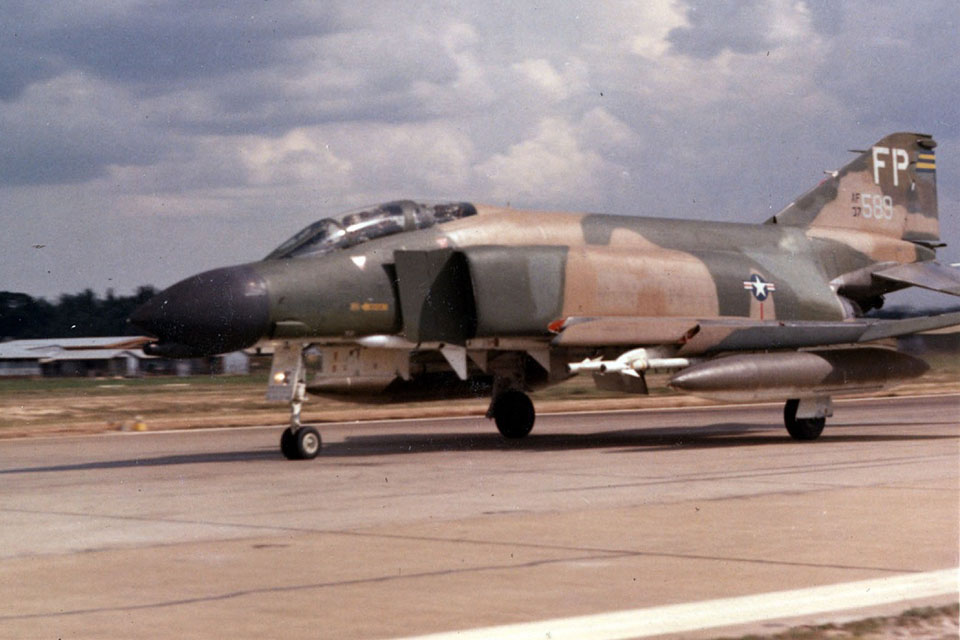
Enemy contact!
After a few miles, Olds turned his flight back toward the approaching Ford and Rambler flights. As he closed, 1st Lt. Joe Hicks and back-seater 1st Lt. Peter Brune in the third plane of Olds’ flight reported a radar contact 17 miles ahead—an enemy plane low, fast, head-on. Hicks led the flight down, but the intruder passed under them into the clouds, breaking radar lock.
Since F-105s would not have pursued such a target, Olds fought off his urge to chase and instead climbed back toward 12,000 feet. But deputy commander James and his Ford Flight, now closing from high ahead, reported the MiG had turned and was at Olds’ 6 o’clock.
Olds and Wetterhahn banked left to throw off the attacker’s aim, relying on Hicks and his wingman to get behind it for the kill. “At the same time I saw another MiG pop out of the clouds in a wide turn about my 11 o’clock position, a mile and a half away,” Olds said. That was already too close. The Sparrow missile required a moment after launch to arm itself and also wouldn’t be able to turn sharply enough to get the crossing MiG.
Clifton locked on the MiG with his radar. Olds fired one of his Sparrows, then another, which were to home in on Clifton’s radar reflection to hit the target. But in Olds’ hard turn, Clifton’s radar lost its track on the target, and both of Olds’ Sparrows failed to reach the MiG.
And now silvery MiG-21s were swarming up out of the clouds. In the fourth plane of Olds’ flight, 1st Lt. James E. Murray III, the weapons systems officer, called out more bandits at 5 o’clock, and pilot Capt. Walter S. Radeker III broke right to check his tail. As he did, another MiG closed on Hicks’ F-4 and fired its gun. Wetterhahn recalled thinking, “Someone’s gonna get killed here pretty quick.”
Ford Flight was just then passing overhead. Flying on James’ wing, Raspberry saw a MiG-21 get in behind Olds’ flight and called out a warning. “At the same time, I glanced over my shoulder and saw another MiG-21 making a run on our number 3 and 4 Phantoms in Ford Flight,” Raspberry said. “The MiG was coming up fast at our 5 o’clock so I screamed over the radio, ‘Ford Lead, break right, we have a MiG at our five!’” James ordered his numbers 3 and 4 to break right. The two Phantoms peeled away and down into the clouds. They were out of the fight.
“I had been on Chappie’s right wing so I broke and went underneath him and turned into the MiG,” Raspberry said. “He broke into a right turn as I went into a hard left. At one point we were 50 feet away from one another, canopy to canopy, as I rolled over the top of him…. Suddenly, just before he got to the cloud deck, the MiG-21 reversed his turn and I knew this was my one chance.” Raspberry fired a Sidewinder, which shot out and hit the MiG between the cockpit and tailpipe. The enemy fighter “swapped ends and stalled out, falling into the undercast.”
just getting started
Score one for the Wolfpack. But Olds’ flight was sandwiched between two MiGs. Wetterhahn, far enough back for a Sparrow shot, fired one but lost sight of it. He fired again and this time watched his Sparrow chase a MiG. He thought for a second that he had missed his target, but then “the missile merges with the MiG and there’s this huge explosion, and he started tumbling.”
The dogfight was just getting started. “Break left, we’ve got one at six!” Wetterhahn called. Radeker rolled in behind the MiG and locked a Sidewinder on the enemy jet, hitting it right in the tail. The MiG snapped nose-down and fell out of the sky.
Meanwhile Olds spotted a MiG at 10 o’clock, crossing right to left. He went after it with full-burner. “I got on top of him and half upside down, hung there, and waited for him to complete more of his turn,” recalled Olds, who had never been to Fighter Weapons School but maneuvered with pure fighter-pilot instinct. “I’m not sure he ever saw me. When I got down low and behind, and he was outlined by the sun against a brilliant blue sky, I let him have two Sidewinders, one of which hit and blew his right wing off.”
By the time Stone arrived with Rambler Flight, the sky was a “furball” of jet exhaust and rocket trails. “All of a sudden, all of the MiGs they could get airborne, were airborne,” Stone said. Enemy fighters were everywhere.
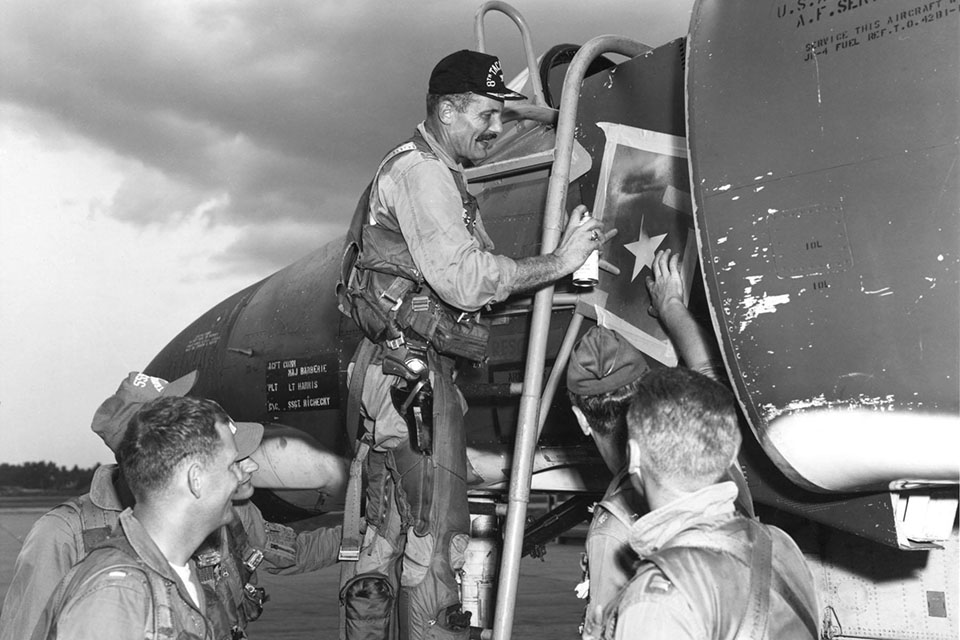
One of the Rambler crews, 1st Lt. Lawrence J. Glynn Jr. and 1st Lt. Lawrence E. Cary, spotted enemy jets coming out of the clouds 6 miles away but could not call them out—the F-4’s radio had failed. However, another Rambler crew, Maj. Phil Combies and 1st Lt. Lee Dutton, saw the threat too: six MiG-21s against four Phantoms.
“When the MiGs crossed in front of Stone, he started to follow, breaking left and losing height,” recalled Combies, who thus found himself somewhat to the right of the others and higher, putting him above and behind the enemy—in a kill position. He locked onto the third MiG in formation. “I pushed the fire button, released it, pushed it again, and waited.” Combies said. “I did not even see the first Sparrow. However, I followed the entire trajectory of the second one, from launch to impact…. The second one hit the tail section of the enemy aircraft. A second later, I saw a huge, orange ball of fire.” The MiG pilot had evidently realized the game was over. By the time the missile hit, his parachute had already blossomed.
Mopping Up
Elsewhere, two MiGs had closed behind the Phantoms of Stone and Glynn. The fifth MiG in the formation actually passed between the Americans, and the sixth MiG wasted a gun burst at too sharp an angle.
The Phantoms dodged right, then left. Glynn lost sight of Stone, who had the first two MiGs in front of him and targeted the second. “I pulled the trigger for the first Sparrow,” Stone said. “It just fell away. So I squeezed two more times.” The second missile went right to one of the MiGs and blew it up.
The dogfight was now so tangled that the authors of the official Air Force report later couldn’t determine which MiG was which or how many were involved.
The F-4s piloted by Glynn and Combies teamed up and went after two more MiGs. Glynn fired two Sparrows at the enemy leader. The second missile hit, so close that the Phantom took damage as Glynn flew through the explosion. He saw the pilot eject. Combies shot all four of his Sidewinders at the other MiG and saw two of them explode—near misses.
Right then somebody shouted, “F-4C I don’t know your call sign, but there’s a MiG on your tail, break hard right!” Every Phantom over Hanoi suddenly snap-turned right. The pilot in trouble was Stone—separated from the others, with a MiG-21 just 700 feet behind him. The enemy pilot fired his 30 mm gun but couldn’t hold his turn. Stone got away, banked back toward his foe, and suddenly he realized, “there’s no MiG. He’s gone.”
The enemy pilots had received their own alert from ground control and dived for home. No other MiGs were seen that day by any American squadron.
Olds’ Wolfpack was credited with seven enemy aircraft destroyed and two probable—half the MiG-21s in Southeast Asia. The squadron’s commander hadn’t lost any planes or men. A journalist asked Olds if he was happy with the results. “No,” the colonel said with a grin. “We missed a few.”
distinguished record
When the Old Man ended his tour in September 1967 after sneaking in 50 more missions, he had added three more Vietnam kills to his score—the only pilot with shootdowns in both World War II (12) and Vietnam (four). In December 1967, he became commandant of the Air Force Academy and in June 1968 was promoted to brigadier general. Olds died on June 14, 2007, at age 84.
In the five months following Olds’ departure from Vietnam, the Wolfpack downed an additional 14 MiGs. By war’s end, it was credited with 38½ confirmed MiG kills, the top Air Force unit of the war and a far cry from the dispirited eaglets Olds had originally met.
As Capt. (later Maj. Gen.) Don Logeman, who flew for Olds in the 555th Tactical Fighter Squadron and shot down a MiG-17 in October 1967, put it, “The Robin Olds of this world are born for combat, not the Pentagon, and I would have flown as his wingman over Hanoi in 1967 even if we had been armed with .45-caliber pistols.”
This feature originally appeared in the February 2019 issue of Vietnam.
Don Hollway, an author and historian, wrote about an F-4 crew in “Saving Boxer 22,” in the October 2018 issue of Vietnam Magazine. For more Bolo images and video, visit donhollway.com/bolo.
historynet magazines
Our 9 best-selling history titles feature in-depth storytelling and iconic imagery to engage and inform on the people, the wars, and the events that shaped America and the world.


